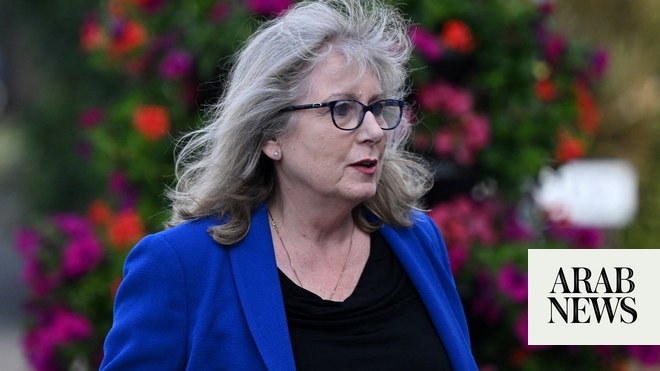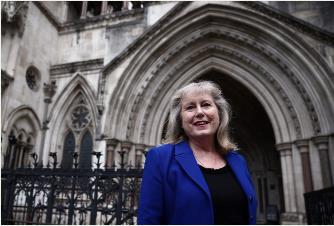
After a year in which lives, homes and jobs were lost to a global pandemic, why does cycling matter? One of the London mayor’s major mandates is transport. Cycling and walking are a key part of that, not least while many people are avoiding public transport or working from home.
If people switch from public transport to driving, Transport for London (TfL) forecasts a huge rise in motor traffic and a corresponding surge in pollution. With road transport accounting for 20% of London’s emissions, providing alternatives to private cars is key.
Some active travel measures, such as low traffic neighbourhoods, have become the subject of heated debate but about 47% of Londoners support them, while 16% oppose them, according to one poll. To a great extent it is divided along party lines; support is far higher among London Labour voters (71%) than Conservatives (36%), YouGov found.
But which candidate should voters who want better conditions for cycling choose? Here’s a guide to the main candidates’ pledges.
Shaun Bailey, Conservative
Although he recently said he wanted new and more diverse cyclists on the roads, cycle superhighways “in the right places”, and greater harmony on the roads, his campaign materials tell a different story.
Bailey’s manifesto says he’d “invest in active travel measures, including cycleways, for every resident in every community”, “promote active travel with hire-scheme electric-bikes”, particularly to outer London, more secure cycle parking including in all new housing developments, and improve road safety for cyclists by “ensuring good access to bicycle training”.
While cycleways in every community would be welcome, many are sceptical that it would happen under Bailey. Without decent, protected infrastructure most won’t cycle – and he doesn’t seem to like decent infrastructure.
“Shaun Bailey will remove all unwanted LTNs in his first 100 days as mayor,” is another claim, part of a recent video interview from the back of a black cab, in which the driver compared low traffic streets to the Tour de France, with Bailey nodding along to claims that cycling drops “drastically” in winter (it’s actually around 15%). He also says he’d cut Streetspace, the programme of expanded pedestrian and cycling space introduced during Covid, a proposed £5.50 charge for driving into London and the city’s low emission zone.
He does not make clear how he will establish which LTNs are unwanted, though, and in fact the mayor does not have the power the scrap them, as they are implemented by London boroughs, not City Hall.
In October he emailed supporters asking them to sign a petition banning LTNs. He claimed, without evidence, that they were causing gridlock, describing them as “a road that has been shut down by the council and Sadiq Khan — without residents ever getting a say”. None of this is true: all addresses in LTNs are accessible by vehicle, just not to through traffic, and the statutory guidance telling councils to introduce such measures, along with the funding, came from the Conservative government, not the London mayor. While consultation could be improved, saying residents never get a say is not accurate – in most schemes the trial period is the consultation, and some have been removed as a result of local complaints.
Bailey also makes the debunked claim emergency services are hampered by LTNs, saying “a lot of the time they’re putting them in where there’s no traffic … they’re pushing that small amount of traffic onto the main roads which are making even longer traffic jams and even more pollution”.
Bailey wants to cut congestion and pollution, but scrapping the ultra-low emissions zone – which has “contributed to a 44% reduction in roadside nitrogen oxide” since 2019 according to TfL – leaves a lot of ground to reclaim.
Bailey did not respond to requests for comment.
Sian Berry, Green party
The Greens are, perhaps unsurprisingly, ambitious when it comes to cycling and walking. Whether their huge policy list, much of it involving hard infrastructure, and in two cases a new Thames crossing, is achievable by 2030 is another matter, but the Greens say they could do it with existing mayoral and GLA powers.
By 2030 Berry says she would fund a zero-carbon transport revolution in London. Trebling the walking and cycling budget to £400m, or £45 per head per year, would be used create a city-wide walking and cycling network with some temporary measures to accelerate rollout.
A car-free central London zone, as well as more car-free residential areas and “key town centres across London” are part of plans to reduce car miles by 40% by 2026 and 60% by 2030. This would be funded by scrapping road-building schemes, including the Silvertown tunnel, smart road pricing, and hypothecating vehicle emissions duty from London vehicles to London coffers.
Green goals include the closure of Regent’s Park gates to through running traffic, and using the mayor’s traffic powers to take charge of main roads and streets from boroughs for “strategic transport projects” such as a traffic-free Oxford Street, delayed by Westminster council, and Kensington High Street’s bike lane, removed by Kensington and Chelsea council.
The Greens pledge new walking and cycling crossings, like the scrapped Rotherhithe and Cremorne bridges, and funding councils and community groups to develop and fast-track LTNs, with quarterly bidding processes and improved consultation.
Tackling hostile junctions is also on the list, and ensuring no signalised junctions are without green pedestrian crossings by 2024.
For pedestrians, the Greens would create a central London walking network, with low-pollution routes, and better and wider pavements with more dropped kerbs and tactile paving.
They would review school streets for every London school, extending to colleges and universities. Docked and dockless bike schemes expanded across London would be integrated with contactless and Oyster payments. There’d also be more secure bike parking, safer HGVs and operating practices, default 20mph speed limits on main roads with pavements, and more roads policing to tackle dangerous issues like speeding, and improved accessibility for disabled people.
Boroughs who want any or all of these measures will have to introduce controlled parking, and plan for parking reductions over time, making way for parklets, bike lanes and bus priority schemes.Caroline Russell, a Green assembly member, said: “London has declared a climate emergency and so we have to do everything in the mayor’s powers to meet that 2030 zero carbon transport commitment. Our manifesto sets the traffic reduction goals and targets for active travel that will underpin that ambition and we have plans for road pricing, vision zero on road deaths and making public transport affordable that will help meet the ambition. We want London’s streets to be green, safe and accessible for everyone, whether getting around on foot, with a white cane, by bike or in a wheelchair.”
Sadiq Khan, Labour
The incumbent is possibly the only mayoral candidate who can bunny hop. Shortly before the pandemic struck, Khan announced he had tripled the length of cycling infrastructure of his predecessor, including some routes that were not yet complete, which nonetheless met the wording of his previous election promise.
In response to the global pandemic, a historic rollout of emergency cycling and walking measures began, at the direction of central government. Streetspace led to the biggest increase in cycling on record, says Khan – and a five-fold increase in cycle routes.
City Hall claimed in March 2021 “more than 100km of new or upgraded cycle routes were delivered or under construction since the start of the pandemic, as well as hundreds of kilometres of quieter streets, extended pavements, new school streets and many more junctions made safer”. According to a list from City Hall, checked with borough campaign groups, 92.98km of cycleways were finished, and 9.4km of routes were started but not yet completed. Some of these are excellent (Cycleway 4 to Rotherhithe); some less so (parts of Cycleway 7 south of Southwark Bridge).
The changes were not all successful: Bishopsgate faced a successful judicial review, the Euston Road pop-up lane was removed, and Kensington and Chelsea overturned its hugely popular pop-up cycle lane. Cycle superhighway 11 in north-west London and the pedestrianisation of Oxford Street were blocked by Westminster council. Several LTNs including Harrow, Redbridge and Wandsworth were removed, but many more routes and LTNs have survived.
Khan says he wants London to be carbon neutral by 2030, with 80% of journeyson foot, by bike or public transport by 2041.
Hampering Khan’s green credentials is the Silvertown tunnel, which he is pressing ahead with despite mounting evidence of the potential local impacts on health from increased air pollution, and spiralling costs. He does not mention it in his manifesto.
Khan pledges to “continue the rapid expansion of London’s cycle network … so it reaches a third of Londoners by 2025”, up from one in five at present.
A new “outer London town centres fund” would include improved cycle parking, wayfinding, street signage and digital mapping, modernising and expanding the Santander cycle hire scheme, which had its busiest year in 2021.
Khan has pledged more walking and cycling community grants, cycle training for adults and children, cargo bike support and freight consolidation and work to “tackle the scourge of [engine] idling”.
20mph limits would be rolled out on TfL roads, along with improvements to dangerous junctions.
Like Berry, Khan has also said he wants vehicle emissions duty to be hypothecated for London.
Khan said: “I am determined that we do not emerge from this pandemic to replace one health crisis with another. Getting Londoners out of their cars and cycling will be a huge part of this.
“We have a once-in-a-generation opportunity to rebuild our cities and our economies so that they are cleaner, greener and more sustainable, and I’m determined to work with boroughs and communities across London to get there.”
Luisa Porritt, Liberal Democrats
Some Lib Dems seem to disagree internally on whether or not cycling infrastructure is a good idea, but in the mayoral race at least they are pledging to double cycle infrastructure expenditure by 2024.
The Lib Dem manifesto is lighter on cycling details than in previous elections. A major manifesto pledge is scrapping the Silvertown tunnel, instead “committing to greener transport projects, like the Bakerloo line extension or more cycling routes”.
The Lib Dems would roll road pricing into a single pay-as-you-go system, based on miles driven and how polluting the vehicle is, with discounts for “special needs and work use”, which will raise funds for public transport and help fund Hammersmith Bridge repairs. Encouraging take-up of Cycle to Work and more cycle parking are on the list, as is supporting pedestrianisation of Oxford Street – though the latter relies on Westminster council, which has blocked previous plans.
Rewilding London’s roofs and public spaces is part of plans to improve air quality, along with more trees and plants and 10 more parks. Santander Cycles would be free on Sundays for a year, to “encourage Londoners to take up cycling and attract more visitors into central London at a time when international visitors are down”, and the scheme would be expanded into more neighbourhoods and better cycle parking provided.
Porritt said: “The Liberal Democrat plan to take London forward means it will be easier for Londoners to make greener travel choices. By backing the move towards flexible working and providing more of what people need on their doorstep, more journeys can be made by bike and on foot.
“To support that shift we need investment in infrastructure and projects that support people to change their behaviour. We are committed to doubling expenditure on cycle infrastructure by 2024 and prioritising the introduction of more safe cycle parking across the capital.”












